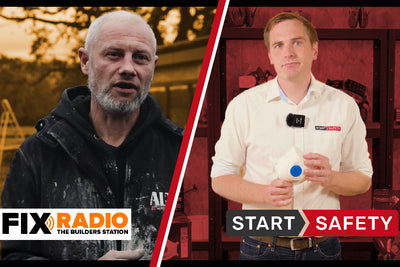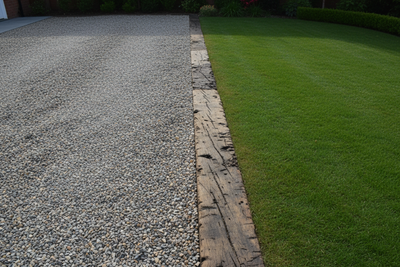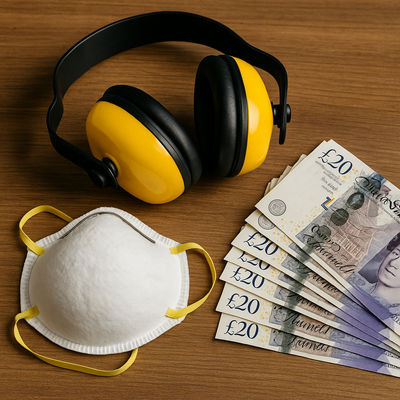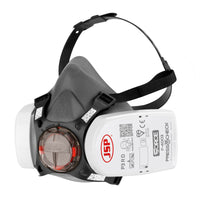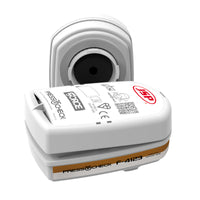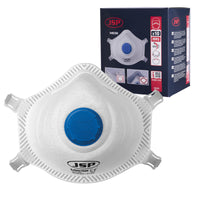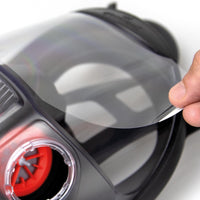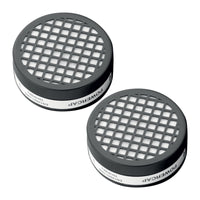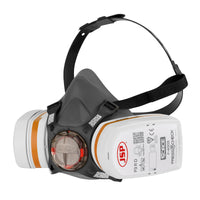Understanding the Different Types of Dust Masks and Their Ratings
Whether you work in construction, manufacturing or simply enjoy DIY projects at home, choosing the right dust mask is vital for your safety. With so many types of dust masks and dust mask ratings available, it can be tricky to know which one offers the right level of protection. In this guide from Start Safety’s experts, we’ll break down the different types of dust masks, explain how dust masks are rated and help you decide which dust mask you should use for your environment.
What Are Dust Masks and Why Do Ratings Matter?
In 2023, the Health & Safety Executive launched its Dust Kills campaign, which highlighted the life-threatening impacts of dust at work. In the same year, in the woodworking sector, the HSE carried out 1,000 inspections and found that 78% of businesses were failing to adequately protect workers from dust.
With an estimated 19,000 new cases (according to the HSE) of breathing and lung problems diagnosed each year, the importance of correct RPE cannot be overstated.
Not only this, but an estimated 33.7 million days of work were lost due to workplace injuries last year.
Dust masks are designed to filter out airborne particles, including, you guessed it, dust but also fumes and other contaminants. They come in various categories and ratings depending on the level of filtration they provide.
In most instances, you will see them labelled as FFP1, FFP2 and FFP3, but it’s the bit after the FF that is the most important.
When looking at dust mask ratings, the letter “P” refers to the level of protection against particles:
- P1 - Low efficiency for low-level risk activities like hand preparation of water-based paints.
- P2 - Medium efficiency. Suitable for working with materials like rockwool and fibre glass.
- P3 - High efficiency. For use when exposed to fine dusts like wood, concrete, brick and other construction materials.
If you are working commercially, information should be included in your method statement and risk assessment.
These dust mask categories help ensure you’re using the correct mask for your working conditions.
Note: If you are working with asbestos commercially or non-commercially, you should ALWAYS seek expert advice on the type of PPE that should be used.

But How Are Dust Masks Rated?
Understanding how dust masks are rated can help you make a more informed decision. The P1, P2 and P3 system is based on the European EN149 standard, which tests masks for filtration efficiency, breathing resistance and leakage.
Here’s how disposable masks perform:
- P1 (FFP1) filters at least 80% of airborne particles.
- P2 (FFP2) filters at least 94%
- P3 (FFP3) filters at least 99%.
So, when you see a P2 dust mask, it means it offers medium protection and is suitable for medium-risk activities. Similarly, an FFP3 respirator mask (the FFP designation stands for “Filtering Face Piece”) provides the highest level of protection available in disposable respirators.

Explaining the Different Types of Respirator Masks
There are several types of respirator masks to choose from, depending on your level of exposure and comfort needs:
- Disposable dust masks (P1, P2, P3) - Ideal for short-term use; lightweight and affordable.
- Reusable half-face respirators - Use replaceable filters and offer a secure seal around the face.
- Full-face respirators - Protect both the lungs and eyes from hazardous particles and gases.
- Powered Air Purifying Respirators (PAPR) - Battery-powered systems that provide continuous airflow, ideal for longer tasks or those with facial hair.
Each type falls under a dust mask category suited to a specific job or environment.

Facial Hair and Dust Masks
Facial hair can have a big impact on how well a dust mask or respirator fits against your face. Tight-fitting masks, such as FFP2 and FFP3 respirators, rely on a complete seal against the skin to offer full protection. Even a small amount of stubble can break that seal, which in turn allows harmful particles to enter.
If you have a beard or can’t shave for personal or medical reasons, a standard disposable respirator may not be suitable. In these cases, consider a Powered Air Purifying Respirator (PAPR) system.
These don’t rely on a tight facial seal and instead use a battery-powered fan to deliver filtered air into a loose-fitting hood or helmet, making them a safer and more comfortable choice for workers with facial hair.
In a commercial setting, staff must be face fit tested by someone who is classed as “competent” to make sure they are being protected adequately. Employers are able to buy face fit testing kits which check for leaks or a break in the seal around the face. They work for tight-fitting respirators and use bitter-smelling or tasting fluids to identify if a leak is present. The kits we stock are good for between 40 and 60 tests.
When to Use FFP2 or FFP3 Respirators
Knowing when to use an FFP2 respirator mask or an FFP3 one is key.
Opt for FFP3 when working in high-risk areas that generate moderate amounts of dust like plastering, sanding, cutting tiles or concrete.
If you’re wondering when to use a surgical face mask or FFP3 respirator, remember that surgical masks are primarily designed to protect others from your respiratory droplets (those you exhale), while FFP3 masks protect you from inhaling harmful particles.
For reusable respirators, the filters do the heavy lifting by trapping dust and particles. Over time they become clogged, reducing airflow and protection. Signs it’s time to change a filter include harder breathing, dust getting through or noticeable odours.
Check out our full guide about the longevity of dust mask filters for more information.
Which Dust Mask Should You Use?
So, what type of dust mask should you use? Well, it really does depend on the job you are doing or expecting your employees to do.
- Light DIY: P1
- Construction or machine sanding: P2
- Hazardous environments or biohazards: P3
Always check the mask’s certification and make sure it fits properly - an ill-fitting mask won’t offer the protection you need.
Looking after your respiratory protective equipment
Proper maintenance of RPE is essential to ensure it continues providing effective protection for the people using it. Here are some of our key tips:
Make sure you clean regularly. Wipe down reusable masks after each use with a mild detergent or manufacturer-recommended disinfectant.
- Inspect before every use. Check for cracks, damaged straps or worn seals that could compromise the fit.
- Always store correctly. Keep RPE in a clean, dry place away from direct sunlight and contaminants.
- Replace parts as needed. Replace filters, cartridges and any worn components according to the manufacturer’s guidance.
Neglecting maintenance can reduce protection and shorten the lifespan of your mask and put the health of you or your employees at risk.
Some Final Thoughts From Us
Understanding the different types of dust masks and dust mask ratings helps you stay safe and compliant. Whether you’re choosing between a P2 dust mask for general use or an FFP3 respirator mask for high-risk work, the right respiratory protection makes all the difference.
Plus, masks shouldn’t be used in isolation, it’s important to think about what other forms of PPE would be relevant to the work being completed. Would dust suppression be helpful for instance?
If you want to understand more about dust masks, our team will be able to help you pick the right mask for the job.
Plus, we’ve partnered with Tile.co.uk to offer up to 10% off plus free delivery on your first order when you sign up for a trade account.
- Author



